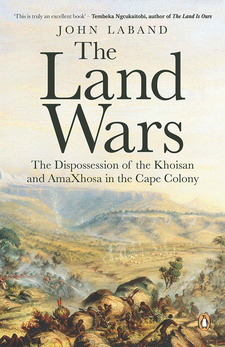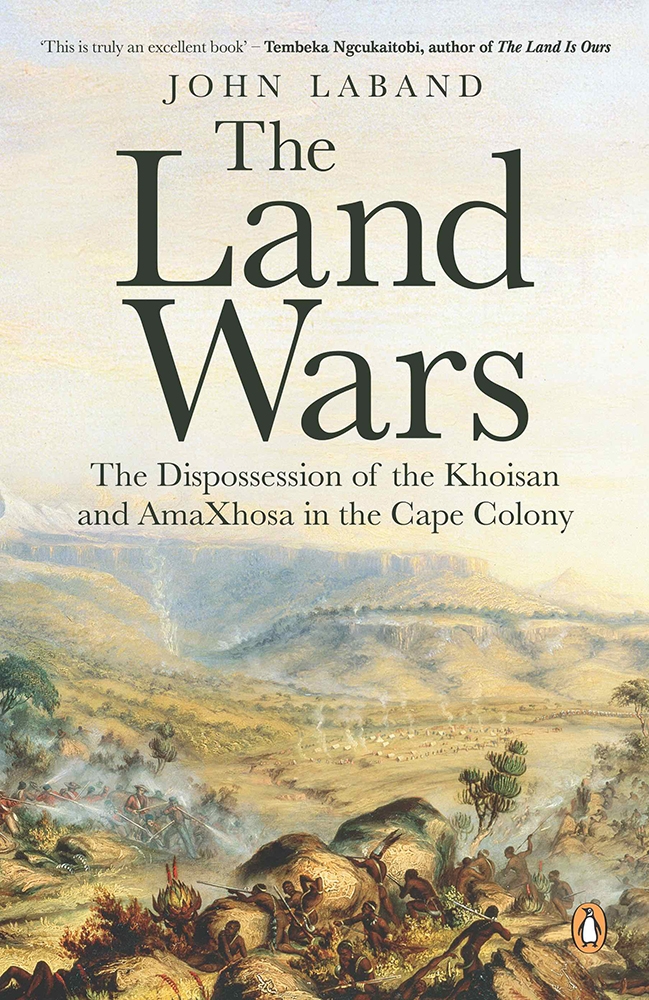The Land Wars. The Dispossession of the Khoisan and AmaXhosa in the Cape Colony, by John Laband

The Dispossession of the Khoisan and AmaXhosa in the Cape Colony, by John Laband. Penguin Random House South Africa. Imprint: Penguin Books. Cape Town, South Africa 2020. ISBN 9781776094998 / ISBN 978-1-77-609499-8
The Land Wars - The Dispossession of the Khoisan and AmaXhosa in the Cape Colony, by John Laband, puts the current debates on land reform in South Africa in their proper historical context.
Introduction
In the presence of members of the Sandile Traditional Council, on 31 May and 1 June 2005 a team from the Department of Anatomy at the University of Pretoria respectfully exhumed a grave on remote farmland between the villages of Keiskammahoek and Braunschweig in South Africa's Eastern Cape province, about thirtyfive kilometres north of King William's Town. The excavation required the initial removal of a granite slab placed over the grave, on top of which stood a memorial plinth crowned by a sculptured bust of an African man. An inscription on the monument reads: Tn Memory of Paramount Chief Sandile, (A.A. Mgolombane) Son of Ngqika, Born in 1820, Died and Buried on the 9th June 1878.' The monument had been erected in 1972 at the request of Paramount Chief Apthorpe Mxolisi Sandile, who insisted that his renowned ancestor, who had died while fighting British troops and Cape colonial forces, deserved a fitting memorial as a hero of Xhosa resistance against colonialism. The exhumation had been prompted by the pervasive oral tradition that, before the British buried his body, Sandile's head had been cut off and that Lieutenant Frederick Carrington had carried the skull away to England as a grisly trophy. For many amaXhosa this narrative rang only too true. The barbarous and disrespectful decapitation of Sandile symbolised the many atrocities committed against their people in the colonial era, outrages that were accompanied by the dispossession of their land and the destruction of their way of life. The investigating team found the skeletal remains in poor condition, but they were indubitably those of an African male in middle age, as Nkosi Sandile had been. He was known always to have walked with a limp, and what confirmed the skeleton as his was the abnormal left tibia (shinbone) which indicated a congenital weakness in the lower leg. Sandile's skull was still in place, conclusively laying to rest the legend of its removal. The team retrieved fragments of broken bottles on a stone cairn below the 1972 memorial, consistent with the cultural practice of placing food offerings on a grave. Cartridge cases were also uncovered, confirming the contemporary report that those who had buried Sandile fired a military salute over the grave. Nkosi Sandile perished of a gunshot wound during the last of a series of nine wars that had been waged intermittently over the course of a century - from 1779 to 1878 - between the Xhosa people and the encroaching forces of colonialism, initially Dutch and then British. This sequence of conflicts succeeded and partially overlapped with another which began further to the west with the First Khoikhoi-Dutch War of 1659-1660. These wars that recurrently flared up over the space of two hundred years in what became the Cape Colony had one feature in common, a characteristic that remained constant over time and was not fundamentally modified by advancing technology or any other factor. All were wars of dispossession. During their course the colonial frontier steadily advanced north from Table Bay to the Orange (Gariep) River and east to the Kei River and the lands beyond. In the process, the indigenous peoples were defeated and driven from their territory, which colonists from Europe then settled. [...]
This is an excerpt from The Land Wars. The Dispossession of the Khoisan and AmaXhosa in the Cape Colony, by John Laband.
Title: The Land Wars
Subtitle: The Dispossession of the Khoisan and AmaXhosa in the Cape Colony
Author: John Laband
Publisher: Penguin Random House South Africa
Imprint: Penguin Books
Cape Town, South Africa 2020
ISBN 9781776094998 / ISBN 978-1-77-609499-8
Softcover, 15 x 23 cm, 336 pages, several b/w and colour images and maps
Laband, John im Namibiana-Buchangebot
The Land Wars. The Dispossession of the Khoisan and AmaXhosa in the Cape Colony
The Land Wars-The Dispossession of the Khoisan and AmaXhosa in the Cape Colony traces the unfolding hostilities and conflicts within the involved groups during the 18th and 19th centuries.

